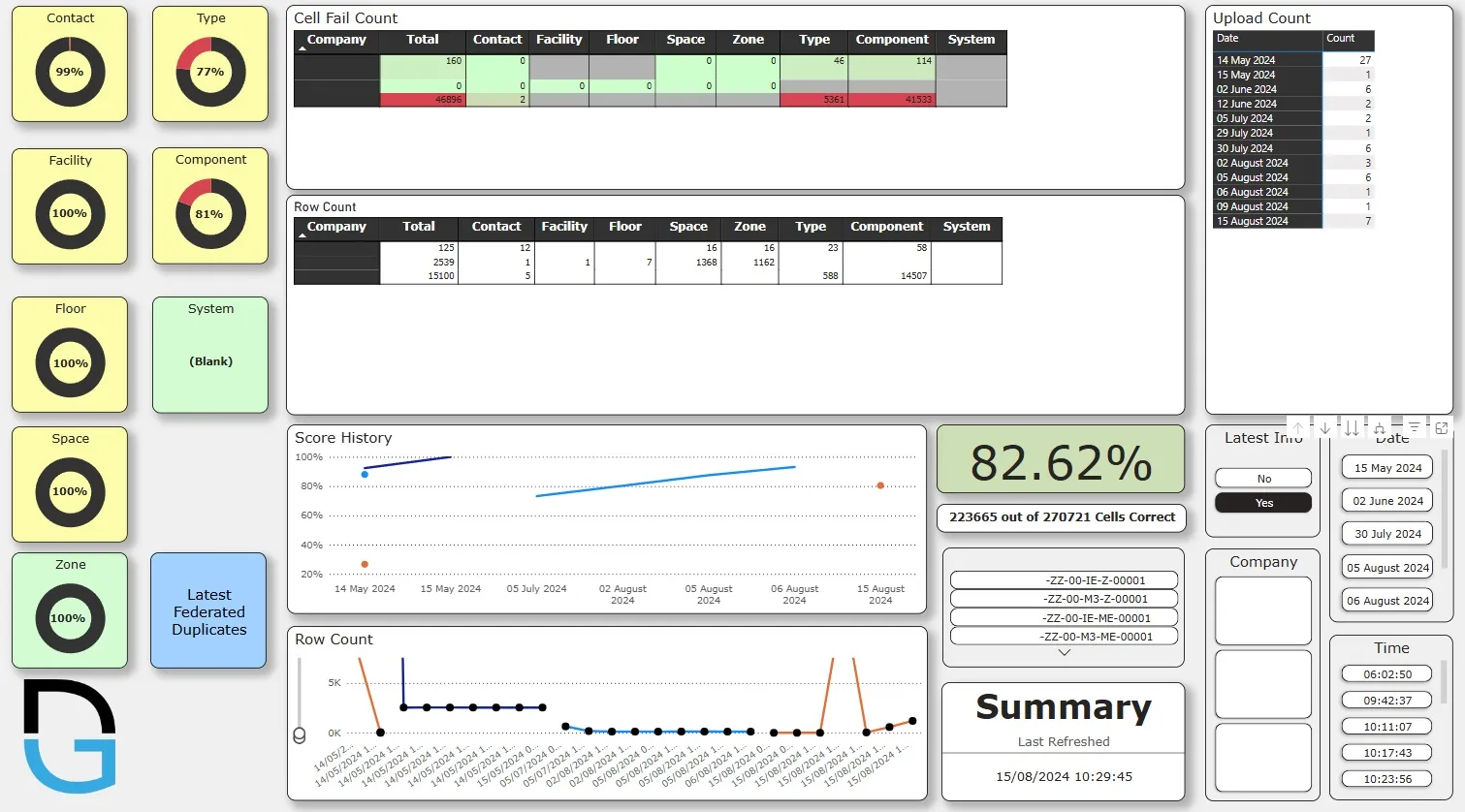
Information management consultancy Digital Guerrilla has launched a platform that offers data validation as a service.
Named GuerrillaV, the platform runs off the Morta system and automates and gamifies COBie data validation. It integrates with Revit, allowing for near real-time completion checks and asset identification based on actual project designs.
Furthermore, it automates the creation of Task Information Delivery Plans and Master Information Delivery Plans, validating them against multiple CDEs, and maps project information directly to client-specified KPIs.
It is already live on 16 projects across the supply chain and is being used by the likes of Graham and McLaughlin & Harvey.
Andrew Waring, digital director at Digital Guerrilla, started developing the platform at the turn of the year. He told BIMplus: “Off the back of the Morta system, we started pulling together a process and a set of codes that would allow a consultant to upload a COBie file and as near as we can get to instantaneously – it’s about five minutes – they get a very detailed dashboard. I’m talking best-in-class level of information and granularity on exactly where the information needs to be fixed. You highlight the thing that’s wrong, and it tells you, in plain language, why it’s wrong and what you need to do to fix it.
“It took six months to initially develop. I’m an architect, not a developer, so I’ve had to learn Python, set up production-level servers, and how to interact with APIs, for example. GuerrillaV is very much about visibility, proactivity, and putting the information in the hands of the person who’s most likely to benefit from it as soon as humanly possible.”
Validation and visualisation
Waring added that Morta does the bulk of the checking and the data storage, while Microsoft’s PowerBI and Fabric are used for visualisation. “It’s not a massive amount of processing that’s required. It’s mostly just mapping. Most of the validation is done through the Python code embedded into Morta,” he explained.
The first project the platform was deployed on was a healthcare building with 1,400 rooms – each requiring validation – so Waring is confident that GuerrillaV performs robustly no matter the scale of the project.
Waring and Digital Guerrilla chief executive and founder Graham Stewart believe the platform addresses three key information management challenges: the reactive approach and delayed feedback loop; disengagement of the design team; and the manual, time-consuming process of information management. This makes GuerrillaV “a whole new proactive approach to information management”, the pair said.
GuerrillaV’s automation allows teams to continuously review and validate their data and deliverables in real-time, rather than waiting for a manual report or a CDE upload to identify issues, the pair added. This real-time validation process ensures that errors are caught early, before they can escalate into larger problems.
Digital Guerrilla: the story so far
Digital Guerrilla chief executive and founder Graham Stewart has been in the industry for 35 years. He set up the consultancy in 2017. Previously, he was UK head of BIM at Ramboll; and before that BIM manager at Buro Happold.
Digital Guerrilla’s business is split 60/40 between project consultancy and training and development.
Andrew Waring was the BIM manager at the architect that was on Digital Guerrilla’s first project. “Graham became my BIM mentor. Over time, we realised it would be good for me to move over, and I joined in late 2023.”
Gamification
They claim the platform’s interactivity and gamification make the information management process more engaging and user-friendly. Gamification elements include progress tracking, scoreboards and real-time feedback.
Waring said: “I introduced a scoreboard at my previous job for model quality, and while some people were a bit annoyed by it, it worked well, invoking some good competition. I’ve been proven right already by the rollout of GuerrillaV that people are challenging themselves to get a better score.”
He noted the increased engagement with information among the initial GuerrilaV users. “I have no idea if subcontractors have been reading the main contractor’s reports in the past, other than just seeing the big red at the start and hitting people over the head. Now I sit in meetings with contractors and subcontractors, and I can see them sharing the dashboard and drilling through the information and asking questions: why is it like this? What are we doing about it as a team?”
Stewart emphasised the proactive nature of GuerrillaV: “This is all about quality assurance, not quality control. Quality control is reactive. Quality assurance is proactive. It’s making sure you deliver what the client has asked for.”
Andrew Waring is presenting at Digital Construction North.
Don’t miss out on BIM and digital construction news: sign up to receive the BIMplus newsletter.












